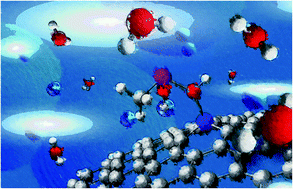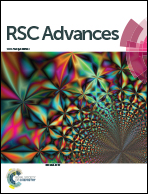A theoretical investigation of the removal of methylated arsenic pollutants with silicon doped graphene†
Abstract
Quantum chemistry calculations were performed to study the adsorption of methylated arsenic pollutants onto silicon doped graphene (SiG), characterizing their geometrical parameters, energetic and binding properties. All the methylarsenicals are chemisorbed onto SiG by silicon–oxygen binding. Trivalent methylarsenicals are chemisorbed with adsorption energies of up to 1.1 eV at neutral conditions; while, pentavalent methylarsenicals reach energies of up to 1.8 and 4.0 eV in their neutral and anionic states, respectively. Additionally, it was determined that the pollutant stability after the chemisorption plays a key role in the adsorption strength; contributions from long-range interactions and charge transfer processes were also discussed. Finally, molecular dynamics and explicit solvent simulations indicated that the adsorption stability remains stronger both in aqueous environments and at ambient conditions (300 K); in water environments at neutral pH, trivalent and pentavalent methylarsenicals will be adsorbed mainly in their neutral and anionic forms, respectively. Therefore, SiG emerges as a promising material for technologies related to the removal of organic arsenic pollutants in their trivalent and pentavalent oxidation states.


 Please wait while we load your content...
Please wait while we load your content...